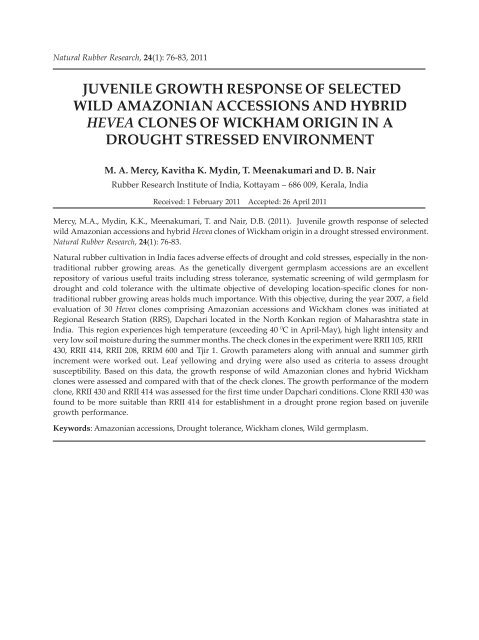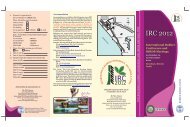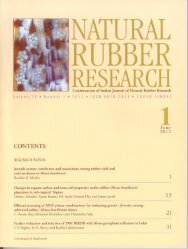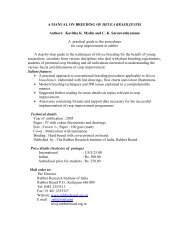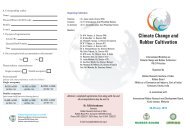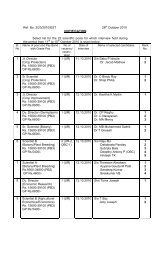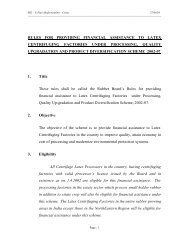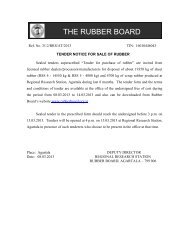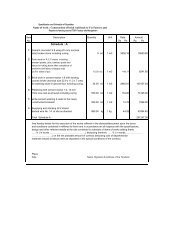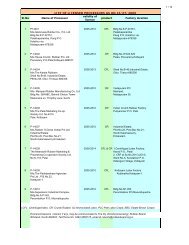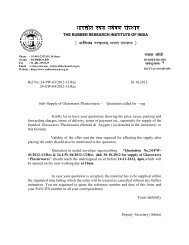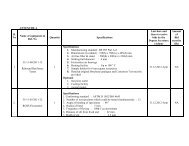to read the publication - Rubber Board
to read the publication - Rubber Board
to read the publication - Rubber Board
You also want an ePaper? Increase the reach of your titles
YUMPU automatically turns print PDFs into web optimized ePapers that Google loves.
Natural <strong>Rubber</strong> Research, 24(1): 76-83, 2011<br />
JUVENILE GROWTH RESPONSE OF SELECTED<br />
WILD AMAZONIAN ACCESSIONS AND HYBRID<br />
HEVEA CLONES OF WICKHAM ORIGIN IN A<br />
DROUGHT STRESSED ENVIRONMENT<br />
M. A. Mercy, Kavitha K. Mydin, T. Meenakumari and D. B. Nair<br />
<strong>Rubber</strong> Research Institute of India, Kottayam – 686 009, Kerala, India<br />
Received: 1 February 2011 Accepted: 26 April 2011<br />
Mercy, M.A., Mydin, K.K., Meenakumari, T. and Nair, D.B. (2011). Juvenile growth response of selected<br />
wild Amazonian accessions and hybrid Hevea clones of Wickham origin in a drought stressed environment.<br />
Natural <strong>Rubber</strong> Research, 24(1): 76-83.<br />
Natural rubber cultivation in India faces adverse effects of drought and cold stresses, especially in <strong>the</strong> non-<br />
traditional rubber growing areas. As <strong>the</strong> genetically divergent germplasm accessions are an excellent<br />
reposi<strong>to</strong>ry of various useful traits including stress <strong>to</strong>lerance, systematic screening of wild germplasm for<br />
drought and cold <strong>to</strong>lerance with <strong>the</strong> ultimate objective of developing location-specific clones for non-<br />
traditional rubber growing areas holds much importance. With this objective, during <strong>the</strong> year 2007, a field<br />
evaluation of 30 Hevea clones comprising Amazonian accessions and Wickham clones was initiated at<br />
Regional Research Station (RRS), Dapchari located in <strong>the</strong> North Konkan region of Maharashtra state in<br />
India. This region experiences high temperature (exceeding 40 0 C in April-May), high light intensity and<br />
very low soil moisture during <strong>the</strong> summer months. The check clones in <strong>the</strong> experiment were RRII 105, RRII<br />
430, RRII 414, RRII 208, RRIM 600 and Tjir 1. Growth parameters along with annual and summer girth<br />
increment were worked out. Leaf yellowing and drying were also used as criteria <strong>to</strong> assess drought<br />
susceptibility. Based on this data, <strong>the</strong> growth response of wild Amazonian clones and hybrid Wickham<br />
clones were assessed and compared with that of <strong>the</strong> check clones. The growth performance of <strong>the</strong> modern<br />
clone, RRII 430 and RRII 414 was assessed for <strong>the</strong> first time under Dapchari conditions. Clone RRII 430 was<br />
found <strong>to</strong> be more suitable than RRII 414 for establishment in a drought prone region based on juvenile<br />
growth performance.<br />
Keywords: Amazonian accessions, Drought <strong>to</strong>lerance, Wickham clones, Wild germplasm.


